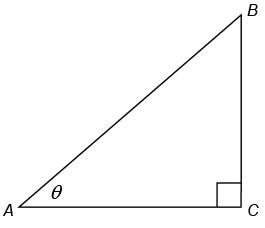This two equations give birth to the same graph: a circumference centered in #C=(2,-2)# with radius #r=2 sqrt{2}#.
![]()
The equation #(x-2)^2+(y+2)^2=8# is the result of a scaling by a factor of #2 sqrt{2}# and the a translation of vector #vec v = (2,-2)#, applied in this order to a unit circle #x^2+y^2=1#.
In fact, the scaling equations are
#(x"'",y"'")=2 sqrt{2} (x,y)=(2 sqrt{2} x, 2 sqrt{2} y)#
and the translation equations are
#(x"''",y"''")=(x"'"+2,y"'"-2)#
To find out that the result of this transformation is the equation #(x"''"-2)^2+(y"''"+2)^2=8#, we have to invert these transformations. So we have the inverse translation #(x"'",y"'")=(x"''"-2,y"''"+2)# and the inverse scaling #(x,y) = 1/{2 sqrt{2}} (x"'",y"'")#.
Now we can compose them, getting #(x,y) = 1/{2 sqrt{2}} (x"'",y"'") = 1/{2 sqrt{2}} (x"''"-2,y"''"+2)=({x"''"-2}/{2 sqrt{2}},{y"''"+2}/{2 sqrt{2}})#.
We can substitute these into the unit circle equation, getting
#({x"''"-2}/{2 sqrt{2}})^2+({y"''"+2}/{2 sqrt{2}})^2=1#
#(x"''"-2)^2/8+(y"''"+2)^2/8=1#
#(x"''"-2)^2+(y"''"+2)^2=8#
This shows that the first equation is a circle of center #C=(2,-2)# and radius #r=2 sqrt(2)#.
To show that the polar equation #r=4 cos theta - 4 sin theta# gives the same graph, we simply convert polar coordinates to cartesian coordinates (#r=sqrt{x^2+y^2}# and #theta=arctan(y/x)#) to show that this is the polar form of the equation #(x-2)^2+(y+2)^2=8#. If we substitute #r# and #theta# in the polar equation, we get:
#sqrt{x^2+y^2}=4 cos(arctan(y/x)) - 4 sin(arctan(y/x))#.
Now consider a right triangle with the two legs #bar{AC}=x# and #bar{BC}=y#, so #bar{AB}=sqrt{x^2+y^2}#.
 )
)
#sin theta = bar{BC}/bar{AB}=y/sqrt{x^2+y^2}#
#cos theta = bar{AC}/bar{AB}=x/sqrt{x^2+y^2}#
#tan theta = y/x rArr theta = arctan(y/x)#
So we get
#y/sqrt{x^2+y^2}=sin theta = sin (arctan(y/x))#
#x/sqrt{x^2+y^2}=costheta = cos(arctan(y/x))#
And these equalities are valid for non-negative values of #x# and #y# because of the symmetry properties of the functions sine, cosine and arctangent.
So we can rewrite the cartesian equation that we got from the polar one, getting:
#sqrt{x^2+y^2}=4 x/sqrt{x^2+y^2} - 4 y/sqrt{x^2+y^2}#
#x^2+y^2=4 x- 4 y#
#x^2-4x+y^2+ 4 y=0#
Finally, we complete the squares:
#x^2-4x+4+y^2+ 4 y+4=4+4#
#(x-2)^2+(y+2)^2=8#
 )
)
